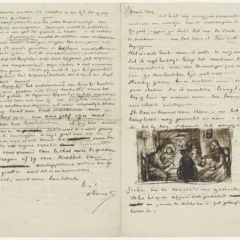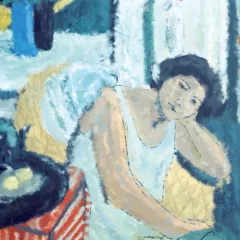Philadelphia is a city of smells – some pleasant, others a lot less so. There’s Olde City, cloaked in an aroma redolent of history – graveyard grass and ghosts and used books. South Street, with its savory scent of cheese steaks stretching across the storefronts like the lure of a cartoon finger pointing the way to indulgence. University City, stuffed with so many coffee shops you can practically taste the caffeine in the air. Now, however, the city is pervaded with the one overpowering smell of snow – paving the streets with ever-changing footprints, swapping parking spots for igloos, and even hovering in the air with the threat of yet another storm. Yet Twelve Gates Gallery, 305 Cherry Street, offers a brief respite from the unrelenting winter and a trip back (or forwards) to summer. Bright colors and forms burst across the white walls of the gallery and bring to life the room of paneled floors and rough wooden columns, thanks to its new exhibition, Samunder Paar (Across the Seas), featuring printmaking by Naeem Rana through January 29.
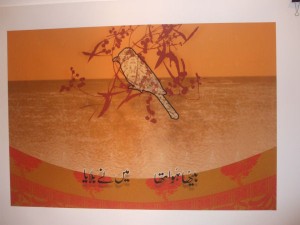
Born in Lahore, Pakistan and a graduate of the city’s National College of Arts, Rana eventually found himself at the Victorian College of Arts in Melbourne to pursue a post-graduate degree. Rana, age 36, now lives in Australia. Interested in the interplay between identifying with and missing both one’s old home and the new, Rana mixes the influences derived from growing up in a family of calligraphers with aesthetic elements from Australia.
“If you are from a family of calligraphers, you have to learn it,” Rana reminisced about his early life, as his young son pounded out notes on a piano in the back of the gallery. “[But] I never practiced as a commercial calligrapher, because by the time I grew up, the computer came.” Calligraphy can take years to learn, but he gave a brief introduction of the process to interested attendees during a workshop on January 15 at the Philadelphia Museum of Art.
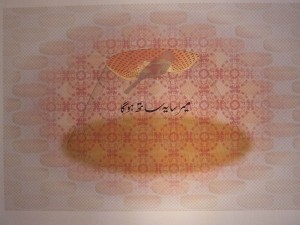
Rana’s account of his early life continued in an atypical mix of nostalgia, gentle humor, and grief over a mother whose recent passing has invested his current work with a profound longing. “We use a lot of fabric in Pakistani culture,” Rana said, when it came time to explain the manifold patterns that provide the foundation to his pieces. “Everything is covered with something…If you have a sewing machine, my mom would sew a cover and embroider it and cover it with that. That’s why I can’t really get away from the patterns and the fabrics.” The fabrics are either scanned into the piece, or simply used for inspiration to create his own designs on the computer.
Quick to laugh, Rana’s mix of perception and jocosity was even reflected in the outfit he chose to wear to the artist talk on January 16 at Twelve Gates – a sharp, black ensemble that would be understated, until you notice the plaid print on his pants.
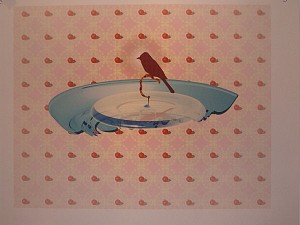
Rana begins by painting the calligraphy by hand. After utilizing a flatbed scanner in his personal printshop, he manipulates the image on the computer by adding outlines and shadows, changing color and size. Rana photographs bodies of water and plants to add to his work. Sometimes, he adds these plants directly by scanning them. Amidst images of the sea that encloses Australia and the swatches of native plant life, nightingales perch. They are representations of a character from a poem by Qayyum Nazar, “bulbul ka bacha” (baby nightingale), as well as a way for Rana to place himself in his art.
“This poem is about the child of a nightingale, and it’s the same word used for the child in this poem, which my mom used for me,” Rana explained. Splashed across the surface of his works are calligraphy fragments of the verses, some of which Rana changed to fit his situation, that relate the tale of a baby nightingale who flies away from home and does not return even after his mother calls for him.
The nightingales (which I can’t help but also associate as the indelible symbols of summer thanks to a few Victorian poets) subsist in eternal spaces of warmly-colored patterns and sunlight on water. They are both soothing and distant, whimsically cartoonish and poignantly expressive.
Ripples spiral through a number of Rana’s pieces, connecting the dissimilar images in his work in much the same way that ripples of memory inextricably link disparate moments in time. His works, as they follow the progression of the altered poem, seem to say that life is a story, both chronological and cyclical, in which the past is constantly affecting us, even as we look back and alter our reminiscences with new perceptions.
Twelve Gates Gallery specializes in art by contemporary, South Asian artists.




